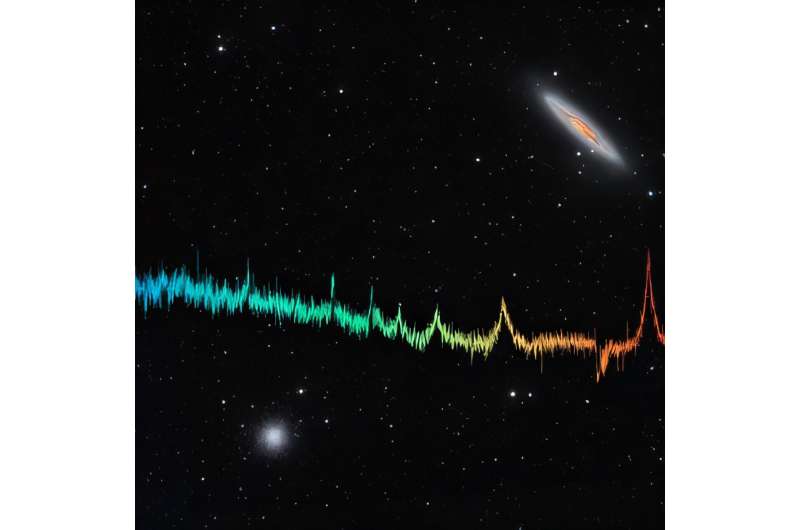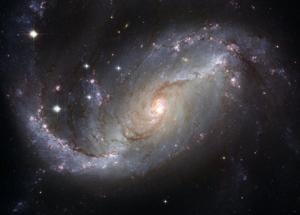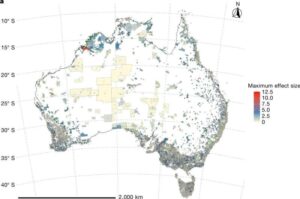
On October 18, 2025, the **4-meter Multi-Object Spectroscopic Telescope (4MOST)** achieved a significant milestone by capturing its first light at the **European Southern Observatory’s (ESO)** **Paranal Observatory** in Chile. This event indicates that the telescope is now prepared to embark on its scientific mission. Unlike traditional telescopes that primarily focus on imaging, 4MOST has the capability to record spectra, allowing it to analyze the light from celestial objects across a wide range of colors.
This ability enables 4MOST to dissect the light from approximately **2,400 celestial objects** simultaneously into **18,000 color components**. This process will assist astronomers in studying the detailed chemical compositions and physical properties of these objects. Once fully operational, 4MOST aims to explore various aspects of the universe, including the formation and evolution of stars and planets, the Milky Way, black holes, and other fascinating cosmic phenomena.
Unprecedented Observational Capabilities
4MOST stands as the largest multi-object spectroscopic survey facility in the southern hemisphere. Its unique features include a vast field of view and the ability to observe numerous objects while recording multiple spectral colors at once. Development of the facility began in **2010**, and it is designed to operate for at least the next **15 years**. The **Leibniz Institute for Astrophysics Potsdam (AIP)** leads the 4MOST Consortium, responsible for the telescope’s construction and scientific operation.
AIP has played a crucial role in various aspects of the telescope, including developing its wide field camera, guiding systems, and the fiber optic system, which features over **2,400 glass fibers**, each comparable in size to a human hair. The institute is also instrumental in determining the telescope’s operational strategies, including observing planning and data archiving.
**Roelof de Jong**, Principal Investigator at AIP, expressed excitement about the telescope’s initial results: “It is incredible to see the first spectra from our new instrument. The data looks fantastic from the start and bodes well for all the different science projects we want to execute.”
**Joar Brynnel**, the Project Manager, echoed this sentiment, stating, “Reaching this milestone is a wonderful achievement after more than a decade of intensive efforts.”
Exploring the Universe’s Mysteries
The first light observations showcase 4MOST’s exceptional capabilities. Among the notable celestial bodies captured was the galaxy **NGC 253**, also known as the **Sculptor Galaxy**. It is one of the largest galaxies in the southern sky, with an apparent diameter nearly equivalent to that of the moon, albeit much fainter. Discovered by **Caroline Herschel** in **1783**, it lies approximately **11.5 million light-years** away and is currently undergoing significant star formation.
Additionally, 4MOST observed the **Globular Cluster NGC 288**, a dense assembly of around **100,000 ancient stars** located about **30,000 light-years** from Earth. This cluster formed about **13.5 billion years ago** and contains minimal amounts of heavier chemical elements, indicative of its pristine composition.
In just **20 minutes** of its first scientific observation, 4MOST captured spectra from over **2,000 other celestial objects**, including a diverse array of stars within the Milky Way. These observations enable scientists to measure various parameters such as temperature, mass, diameter, velocity, age, and evolutionary stage.
Beyond our galaxy, the telescope also gathered spectra from a pair of overlapping galaxies located **900 million light-years** away, along with other galaxies as distant as **10 billion light-years**. This data will help determine their distances, internal velocities, and star formation histories.
The 4MOST science team comprises more than **700 researchers** from universities and institutes worldwide. In its first five years, 4MOST plans to conduct **25 different scientific programs**. Ten of these programs are designed by consortium members, while an external committee of astronomers nominated by ESO selected the remaining fifteen.
4MOST’s multi-fiber technology allows for simultaneous observations of various scientific programs. For instance, some fibers can focus on rare objects while others compile large statistical samples of stars or galaxies. Prominent research areas include the origins of chemical elements, the Milky Way’s development over time, and the nature of dark matter and dark energy.
At the heart of 4MOST’s system are **2,436 optical fibers** that capture light from celestial objects. The light is then transported to spectrographs that separate it into various colors. A new optical camera system, nearly **1 meter in diameter**, provides a field of view of **2.5 degrees**, one of the largest for a **4-meter-class telescope**.
4MOST will observe new celestial objects every **10 to 20 minutes**, employing a fiber positioner that can reposition all fibers in under two minutes. The light collected is analyzed at the **4MOST data center** located at the **University of Cambridge**, where it undergoes processing to extract physical parameters before being archived at AIP and ESO for broader scientific use.
The achievement of capturing first light is a significant step in advancing our understanding of the universe, as the 4MOST telescope prepares to unveil new insights in the years ahead.







